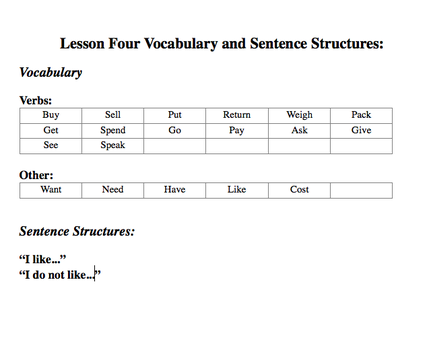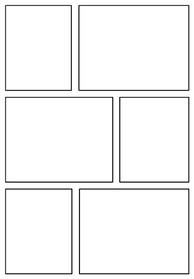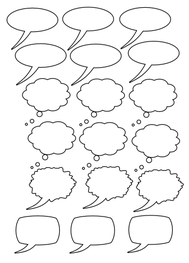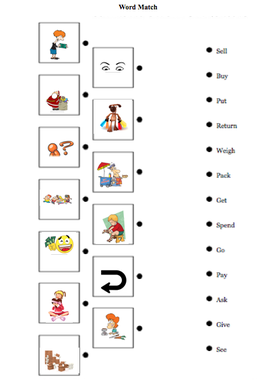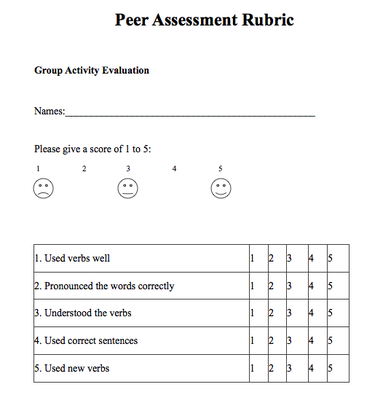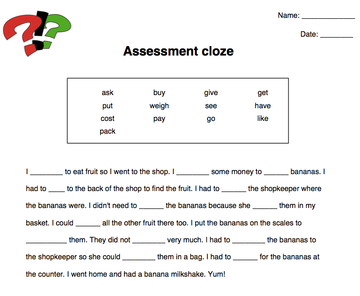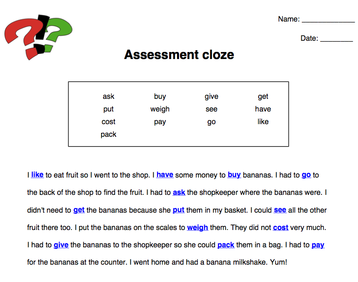Lesson Four
|
Learning Intention: To develop English Language skills which students will use to shop for basic foods in different environments. In the process they will learn to use the appropriate verb tenses and forms. Students will demonstrate developing knowledge of vocabulary and sentence structures through a reflective journal. |
WALT (We Are Learning To):
1. Use the correct verbs while talking about shopping.
2. To use the verbs we have learnt in simple present tense sentences.
3. Monitor our own progress in this unit by recording reflections and evaluations in an on-going journal.
Success Criteria
We know we will have achieved this when:
1. We can describe actions in shopping using two different sentences.
2. We can pronounce two different sentences using verbs in present tense.
3. We have recorded reflective journal entries and scores in our journal as indicated during each lesson.
Learning Journal
(i) Students head up Lesson Four sub heading in learning journal. Teacher model and write on board for students to copy.
(ii) Students record WALT and Success Criteria under Lesson Four.
Vocabulary
|
Vocabulary and Sentence Structures The following are the vocabulary and sentence structures used in this lesson: |
http://www.familylobby.com/common/tt6115628fltt.gif Students glue copy of vocabulary for Lesson Four into Learning Journal.
Review
The teacher writes the six expressions from lesson one on the board with one number from one to six in front of each expression. The class is divided into two teams. Ten vocabulary word cards are written on the board from the vocabulary from lessons one, two and three. One team closes their eyes and then the teacher shows one of the cards to the opposite team. One member from the first team comes to the front and throws a dice. If the student throws a five then the team must use the expression numbered five on the board. The team then has six chances (out of ten cards on the board) to choose the correct card. The student must use the expression and ask the other team the question. e.g. “Do you have a banana?” If the student has chosen the correct card then the team must reply “Yes I do.” If the student chooses the wrong card the student in the other team replies “No I don’t.” If the student chooses the correct word card then they get a point for their team and the next round starts.
Extension Activity: Visit the following website for a variety of picture match activities based around food vocabulary: word match game
Introduction Activity
Teacher introduces verbs by acting out a few actions and asks children to tell him/her what he/she does (e.g. walk, laugh, jump etc.). He/she asks children to do actions of their own and others say what they do.
Activity One
Task i
Teacher then introduces verbs as action words. Ask children if they know any actions perfomed during shopping. Teacher lists the words on the board as the children give them. Teacher introduces the ones which children have missed.
Task ii
Teacher can use a video with different shopping actions with a voice narration emphasizing pronunciation. A powerpoint with voice narration can also be used in the same way. If these technologies are not available simple actions, pictures or photographs could be used. After paired activities the phrases could be introduced and pairs practice again.
Media:Expressions_Lesson_one.flv
If you can't open this file please visit the FLV website and download the free FLV player.
Activity Two
Students practice the verbs by acting and pronunciating them in pairs - role play/drama with shopkeeper and customer scenario. Students use vocabulary and sentences in past lessons with new sentence structures to create a dynamic role play. The teacher goes round the pairs monitoring how they are doing and correcting any mispronunciations. Pairs present their actions back to class.
Activity Three
Task i
Comic Action Creation:
Write or make your own sentences with at least six new verbs that you have learnt in this lesson.
Task ii
Word and Picture Match
Task iii
Powerpoint Presentation:
Individuals make a Powerpoint of verbs and pictures (depending on ability, they can add voice. If not, students speak to Powerpoint as presenting).
Alternative Presentation
Story Board
Students create story board using pictures that they speak to and present to the class using verbs learnt in lesson.
http://www.familylobby.com/common/tt6115628fltt.gif Students glue completed tasks from above into Learning Journal.
Reflection
Students present task iii from Activity Three back to the class. Teacher encourages students to compliment one another using courtesy expressions from previous lessons.
Assessment
Learning Journal
Conduct a vocabulary test the same as lesson three.
Formative
Ongoing teacher formative assessment of students. Teacher questions and reviews student progress providing formative feedback for individuals. Formative activities should be conducted across a range of whole class, group and individual activities regularly throughout the lesson. Feedback may be written or oral and may or may not be recorded for future reference as deemed appropriate by the teacher.
http://www.familylobby.com/common/tt6115628fltt.gif Teacher records ongoing Formative Assessment in students Learning Journals.
Rubric
Peer assessment of presentation.
http://www.familylobby.com/common/tt6115628fltt.gif Students glue completed Peer Assessment Rubric into Learning Journal.
Written
Cloze activity with verbs.
http://www.familylobby.com/common/tt6115628fltt.gif Students glue completed Cloze Activity into Learning Journal.
